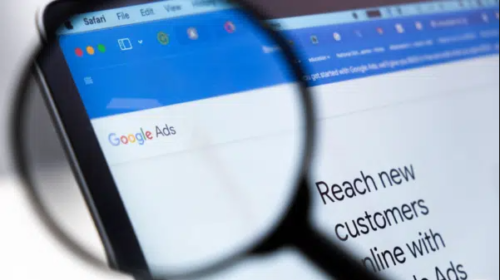What B2B marketing can teach you about PPC in higher education
Though universities are targeting individual consumers rather than businesses, columnist Pauline Jakober shows paid search efforts for these institutions often more closely resemble B2B than B2C.
Pick up any “introduction to marketing” textbook, and it will describe the difference between business-to-business (B2B) marketing and business-to-consumer (B2C) marketing.
It will note that, generally, the B2C sales process is simpler. Conversion paths are short. Fewer people are involved in the purchase decision. And once the sale process is complete, the connection between purchaser and seller is minimal.
In contrast, the B2B sales process is more complex. Conversion paths are long. More people are involved in the purchase decision. And post-sale, the purchaser and seller remain connected through implementation, support and possible future sales.
Of course, as with any marketing “rule,” there are exceptions. And after managing PPC accounts for a number of post-secondary institutions, I can tell you that in many ways, PPC marketing for universities has more in common with B2B marketing than B2C marketing — even though universities market to consumers (i.e., prospective students) instead of other businesses.
In this article, I detail five similarities (and a few differences) so that you can use this knowledge to inform your own university PPC campaigns.
5 Similarities between university PPC and B2B PPC
Technically, university marketing is B2C — yet it shares many similarities with B2B marketing.
1. Length of conversion time
Perhaps because choosing a college or university is such a momentous, life-changing decision, conversion in university PPC is a long-term game. No student (or parent) is going to make a decision based on one click or one ad — which is also the case in B2B marketing.
Instead, students can take months or even years to convert. The initial click is merely the first step in a series of micro-conversions that (eventually) leads to the final “sale,” i.e., student registration.
PPC marketers in the university vertical need to plan for this long conversion process. Make sure you and/or your client have the necessary post-click support and processes in place.
And when it comes to launching campaigns, you need to plan months or even years ahead, not weeks.
2. Call to action
As a result of this longer conversion path, calls to action (CTAs) in university campaigns have more in common with B2B than B2C.
In B2C marketing, CTAs are commonly “Buy now” or “Buy today.” But these CTAs make little sense for B2Bs or universities. A B2B CTA is more likely “Download our white paper” or “Request a consultation.”
Here, the CTA is intended to start a conversation, not close the deal.
Similarly, universities might use “Sign up for our open house” or “Request an info package,” instead of “Register now.”
3. Distinct target markets
In B2B marketing, it’s not unusual to market to multiple audiences because of the dispersed nature of purchase decisions. Decision-makers (and influencers) can reside anywhere within a company, including procurement, IT, other business units and executive suites. So as a marketer, you need to figure out how to appeal to all of these audiences.
Similarly, in university marketing, it’s easy to make the mistake of only targeting students. But very often, the student’s parents also hold decision-making power. This can present a challenge to marketers, as students and parents may have different questions and value different things.
Therefore, you need to experiment with CTAs and landing pages to appeal to both groups.
4. Low search volume challenges
In both B2B and university PPC, we’ve found that clients are sometimes eager to employ keywords with low search volumes.
In B2B, for example, we’ve been asked to run ads for highly technical webinar topics that, quite frankly, no one is searching for.
Similarly, with universities, we’ve had clients want to run ads promoting newly acquired professors. But, let’s face it, even though professors may be highly respected in their fields, prospective undergraduate students are unlikely to have heard of them (or to search for them).
We often come up against this issue with open houses and specific course offerings as well.
The solution? We rely on ad extensions (especially sitelinks) to promote these low search volume items.
5. Ongoing post-sale relationships
In B2B marketing, purchasers will often rely on sellers for implementation and ongoing support after the sale — especially if the product or service is technical.
Students also tend to have close, ongoing relationships with their university of choice. These relationships can extend throughout the students’ undergrad, grad and post-graduate years. And they may even continue as alumni.
3 Differences between university PPC and B2B PPC
While B2B marketing and university marketing share many similarities, some important differences remain.
1. Personal stakes
While education isn’t cheap, it doesn’t (hopefully!) run into the hundreds of thousands and/or millions of dollars that characterize many B2B sales. Thus, you might conclude that B2B sales are higher stakes than education decisions.
But I would argue that they aren’t.
Why? Because students and families pay for education out of their own pockets. They’re spending their own hard-earned money. And it’s a decision that will affect them, personally, for the rest of their lives.
Therefore, as a university PPC marketer, you have to be ready to answer every question and address every concern. There’s no hard, quick sell.
2. Marketing to existing clients
In B2B marketing, the first sale often marks the start of remarketing efforts. When a company has purchased a sophisticated product or service, there are endless opportunities to market support, expanded services, add-ons and so on.
Thus, in B2B, there’s always the hope of nurturing existing clients into megaclients.
But with universities, you can only enroll one student “body” at a time, so the dream of growing an existing client into a megaclient is much more muted.
There are opportunities for remarketing with universities (such as marketing graduate programs to current undergraduate students), but strategies will differ from B2B.
3. Targeting options
AdWords targeting options are perhaps the most obvious differentiator between B2B marketing and university marketing.
Unlike B2B marketers, university marketers have really cool targeting options in AdWords. You can target universities as “places of interest” in AdWords and apply a variety of modifiers, as the AdWords help file explains (screen shot below).
We’ve used this special targeting option to market graduate university programs, because it allows us to zero in on existing university students.
Unfortunately, I don’t foresee a similar option emerging for B2B marketers.
Some rules are made to be broken
While marketing “rules” are helpful, it’s never wise to adopt them without question. (And I think most marketing text authors would agree.)
But rather than tossing your marketing textbooks in the trash, use these contrarian insights to take your university PPC campaigns to the next level.





